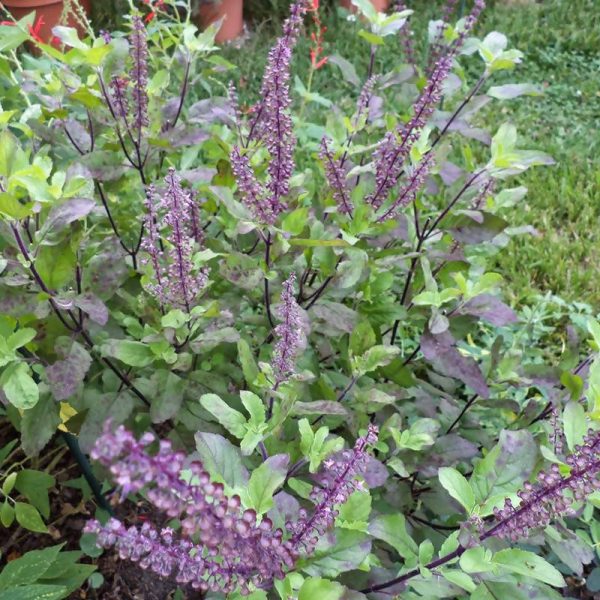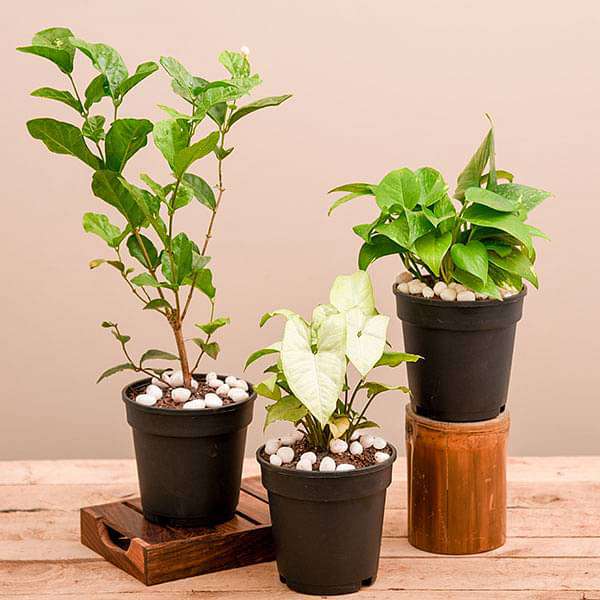How To Grow and Care for Cissus Quadrangularis
If you’re a health nut, you might have heard of Cissus quadrangularis (KISS-us kwad-ran-gew-LAIR-iss), AKA veldt grape.
This perennial member of the Vitaceae family has been scrutinized for its potential (and often imaginary) health benefits.
While the exact origins of this plant are unknown, it can be found natively throughout southern Asia and much of Africa.
- Adamant Creeper
- Devil’s Backbone
- Stemmed Vine
- Winged Treebine
Veldt Grape Cissus Quadrangularis Care
Size & Growth
Chances are, you’ll be pretty confused about the size of the veldt grape if you look this plant up online.
This is because its trailing and climbing habits have different heights, as do indoor vs. outdoor plants.
An indoor plant will usually reach around 2’ feet tall when climbing, and an outdoor plant might climb to 4’ feet.
When allowed to creep along the ground, 5’ foot or longer vines are not unheard of, and horizontal growth is sometimes said to be unlimited for this reason.
Depending on where you grow this vine, it can also be raised as an annual, although it will thrive as a perennial in tropical or subtropical climates.
Its leaves tend to be the main draw for growers.
As a succulent, it has bright green stems and small blue-green leaves with unusual shapes.
More on Cissus
Flowering and Fragrance
Grown primarily for its bizarre foliage, most growers won’t miss the fact that veldt grape rarely blooms when indoors or potted.
When producing flowers, expect insignificant pale yellow, chartreuse, or white flowers to appear in the spring.
Due to how rarely it blooms, many growers erroneously believe the plant produces neither fruit nor seeds.
However, it produces small red grape-like fruit when fertilized.
Light & Temperature
Like most vining plants, veldt grape will scorch easily in direct sunlight, especially during midday.
Outdoors, dappled sunlight works best for this plant, although morning exposure and afternoon shade will also work.
When placing in a spot that mixes shade and direct sun periods, aim for 4 to 5 hours of direct sunlight to maintain a healthy plant.
Indoors, bright, indirect sunlight, or diffused sunlight (such as through a sheer curtain) works best, and the plant will need at least 5 hours of sun per day.
Overall, the veldt grape can tolerate light shade conditions but will be leggier and less robust as a result.
Moderate to high humidity works best for this plant.
Indoors, a sunny spot in a kitchen or bathroom will work, but you may need to augment the plant with a humidifier or misting if the leaves look too dry.
This plant doesn’t like cold temperatures and will grow best in USDA hardiness zones 10 to 12, but may also thrive in certain parts of zone 9b.
It will tolerate temperatures from 50 to 90° degrees Fahrenheit but doesn’t like exposure to drafts or other sudden temperature changes.
Ideal indoor temperatures are between 60° – 80° degrees Fahrenheit.
Indoor plants may also be placed outside during warm weather to encourage growth.
Watering and Feeding
As a succulent, veldt grape is drought tolerant and extremely sensitive to overwatering.
As a result, the soak-and-dry method is best for this plant.
Water quadrangularis when the soil is dry 2” inches down during the growing season.
Cut back mid-autumn through winter.
A balanced liquid houseplant fertilizer may be applied every 2 months, following any instructions on the fertilizer packaging.
Cut back in autumn and winter.
Soil & Transplanting
Veldt grape prefers a well-drained, slightly acidic soil.
With these rules in mind, it will grow in most garden or potting soils and can tolerate neutral soil conditions at the cost of some growth.
A potting mix for succulents is ideal, especially if augmented with some aggregate such as coarse sand or perlite.
For the first 4 years, your Cissus quadrangularis will need be repotting annually.
Once it reaches its fifth year, you can cut back to repotting every 2 to 3 years.
Always use fresh soil and graduate to one container size larger as needed to prevent overcrowding.
You may also wish to add a base layer of aggregate to the pot to improve drainage.
Grooming And Maintenance
Prune in the spring, trimming back stems to encourage fuller growth.
You may also find indoor plants in need of an occasional wipe down to remove dust from the leaves.
How To Propagate Quadrangularis Cissus
Division and stem cuttings are the two most common propagation methods, and both tend to have a high degree of success.
While it’s possible to propagate via seeds, this process can take a lot of time and effort.
Add to that the fact that it can be rare for this plant to flower, and seed viability isn’t overly high, and you can see why so few growers use seeds to expand their veldt grape collection.
Cissus Quadrangularis Pests or Diseases
This plant is drought tolerant and generally free of disease, as long as it’s properly cared for.
However, it’s sensitive to cold and highly susceptible to root rot if overwatered.
Aphids and mealybugs tend to be the most common pests to attack the plant.
Veldt Grape is not known to be toxic to humans or pets, although its effects when taken long-term as a supplement or health food are unknown.
The sap may cause some skin irritation in sensitive individuals.
Uses For Cissus Quadrangularis
This plant has been used in Ayurvedic medicine for centuries.
It’s currently being studied for potential benefits by western medicine, although no evidence has been found for many of its supposed benefits.
This hasn’t stopped a thriving market in veldt grape products.
Its unusual shape makes it an excellent choice for pots and hanging baskets in the home
In the garden, it can be trained up trellises or other supports.
Conversely, you can allow it to creep along the ground as a ground cover.







Reviews
There are no reviews yet.